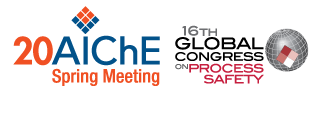

However, even despite projected future major improvements in hazard identification techniques, leaving HAZOP and FMEA far behind, major hazards may escape our sight. Also, if all potential technical plant mishaps would be under control, possible external factors, e.g., human intervention, cyber-attacks, or weather will reduce certainty. Apart from not being identified, cost considerations will ignore low frequency major risks, yet, these can still materialize albeit rarely, hence coverage can never be complete.
Around 1995 in studies why certain companies are better surviving than others, the concept of "resilience" emerged. Also, the term "resilience engineering" appeared in the psychological context of organizational performance. "Engineering" meant here analyzing and improving culture. MKOPSC, though, initiated a decade ago resilience research to involve the whole plant operation. This kind of resilience based on risk assessment and indicators with early warning signals, staff prepared attitude, restrained flexible thinking, effective emergency response and recovery contingency measures, e.g., regarding supplies and customer needs, staff and funds, will lower and shorten post-disaster production output dip. Digitization and data, e.g., of various kinds of sensors and on performance indicators, will further support dynamic operational risk management, including abnormal situations, improving resilience and business continuity.
Presenter(s)
Language
Pricing
Individuals
| AIChE Member Credits | 0.5 |
| AIChE Pro Members | $19.00 |
| Employees of CCPS Member Companies | Free |
| AIChE Graduate Student Members | Free |
| AIChE Undergraduate Student Members | Free |
| AIChE Explorer Members | $29.00 |
| Non-Members | $29.00 |
